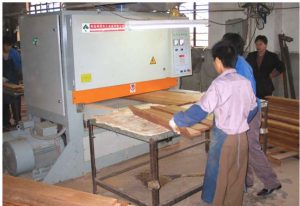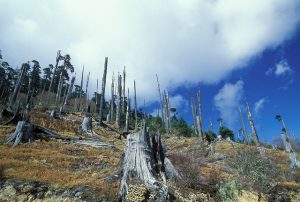From hardwood floors to notebooks, and the firewood, food and construction materials forests provide rural residents of developing countries, people around the globe depend heavily on this limited natural resource.
Beyond these direct uses, forests also provide an array of ecosystem services that include carbon sequestration, water filtration, erosion control, and habitat for a diverse array of species.
Disturbingly, humans jeopardise these critical forest ecosystem goods and services around the world through illegal logging for timber products and agriculture.
Cost of illegal logging
Illegal logging is not only environmentally detrimental; it also results in significant economic losses and social problems.
Harvesting, transporting, and processing wood illegally depresses the global price of legal timber. According to the World Bank, the global market loses an estimated
US$10 billion (63.3 billion yuan) per year, and governments lose an additional US$5 billion in revenues due to illegal logging practices. The law enforcement burden falls on customs officials in both exporting and importing countries.
Identification of illegally logged species currently requires microscopic examination of wood anatomy by trained experts, and sometimes extensive genetic testing in an off-site lab. To bring wood identification capability to the field, the US Department of Agriculture’s Forest Product Laboratory (FPL) is developing a portable wood structural scanner and complementary identification software –
the XyloTron.
Advanced technology
The product name sounds like a new
Transformer, and while the XyloTron is much smaller in size, it is just as exciting – at least to customs and forest officials. The prototype of the FPL’s
machine vision project consists of a field-portable macroscope, the XyloScope, and identification software. The XyloScope has an array of LED lights to illuminate a cross-section of wood and a scientific-grade camera to capture a magnified image.

Co-inventor Alex Wiedenhoeft demonstrates wood identification using the XyloTron system. Photo credit: Andrew Averil, Hardwood Floors Magazine
The image of the wood structure is transmitted via USB to a computer, where software uses wavelets to extract horizontal, vertical, and diagonal information from the image at 10 spatial scales (see figure below).
This produces a spectral signature with 30 points, which is statistically compared to a reference data set. When restricted to the common commercial woods of Central America, the XyloTron can identify genus and likely species, all in
a matter of seconds.
For comparison, whereas the XyloTron can accurately distinguish among species within the genus
Swietenia (true mahoganies) up to 80% of the time, trained experts have been unable to identify among the species using a hand lens,
or even a microscope.
Identifying the wood’s source is important because specific species may be legally harvested from some areas, but not others. Illegal loggers often falsify timber origin in import/export documentation, especially when they have harvested from a protected area.
Determining geographic origin of timber is possible, but it requires DNA-based or stable isotope methods and a wide array of reference material, for example, a database of DNA data with relevant geospatial variability, likely including leaf samples from tree stands from within and outside protected areas.

The Xylotron characterises wood image topography (A) and calculates the energy at ten different levels (B). This produces a 30-point energy spectrum (C) for analysis and identification. Image presented in Hermanson et al. (2013).
The fight against illegal deforestation has reached a critical point – while forests from the Amazon to Indonesia are rapidly diminishing, forest authorities and tech developers are rising to the challenge.
Field use
In the Brazilian state of Sao Paulo,
collaboration between the state’s Environmental Police and the Department of the Environment’s Forestry Institute has employed wood anatomy experts to train law enforcement officers at hundreds of checkpoints. With their combined expertise and effort, from 2010 to 2014, police imposed more than 10 million Brazilian Reais (BRL) – and up to BRL 27 million (18-50 million yuan) – in fines per year.
FPL, in collaboration with the Sao Paulo authorities, will be testing and improving the XyloTron to complement and facilitate identifications by wood experts to further crackdown on the trade in illegal Amazonian timber. The FPL team is working to finalise an identification model for commercial Brazilian woods that will be field tested in Brazil by the Sao Paulo programme.
FPL also collaborates with labs around the world to test the XyloTron and to add wood images to the reference library, increasing the breadth of species the system should be able to identify correctly.
Field deployments by expert John Hermanson at the Port of New Orleans and Seattle-Tacoma International Airport suggest that the XyloTron, when used correctly, is more accurate than a field officer
after a week of training.
FPL is currently focusing its model development on Central American and Brazilian tree species, two major sources of illegally harvested wood. While the XyloTron is not yet commercially available, FPL lists its cost at about US$2,000 per unit. Its use by regional customs agents, police, and other timber trade officials should help slow the movement of illegal timber across state boundaries.
This article was originally published on the Mongabay website and can be found here.









